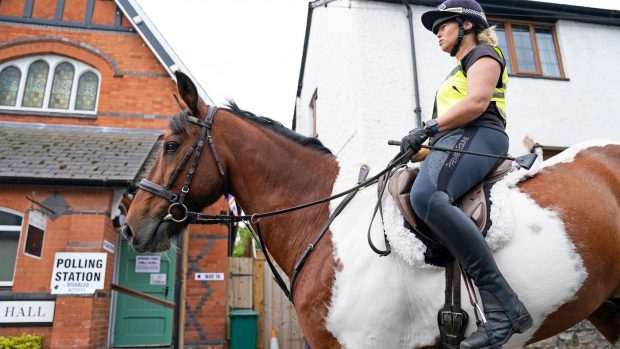Hunting in Britain offers tremendous variety in what there is to jump. H&H asks the experts where to find the best jumping country and how to cross it.
Where to find the best walls
These demand respect and an experienced athletic horse. The landscape is dotted with them in countries such as the High Peak Harriers, Barlow, Staffordshire Moorland and the Badsworth and Bramham Moor. The Heythrop, Duke of Beaufort’s, VWH, Cotswold and North Cotswold countries are also synonymous with dry stone walls.
…and how to jump them
Peter Dunn is field master with the High Peak Harriers. Because the country’s limestone walls are vertical and 90% are topped with upright stones (copers), all horses wear knee boots.
“Here you need a careful jumper,” he says. “Historically — and for obvious reasons — our horses are usually ex-showjumpers. Irish sport horses are also popular.
“They must be nimble but still have enough bone. We have high acreage fields so the horse must be able to gallop and then convert its energy to jump off three and four strides between 40 and 50 walls a day.”
“We are in the heart of the Peak District and so our biggest bugbear is the Government’s stewardship scheme,” adds Peter.
“This stipulates that any walls rebuilt are protected with a strand
of wire above the coper. That makes the jump a bit more challenging.”
The secret to survival here is a natural ability to see a stride.
“You must allow your horse to take off — half a stride early, rather than late.
“You don’t want to be too short unless your horse is very clever. But it doesn’t matter how well you present at a fence, your horse still needs the ability to take you there.”
Where to find the best banks
Never jump these on a wing and a prayer. They probably require more thought than any other obstacle. Watch the locals with the Western, Four Burrow and Cury. Get it right and the feeling is sublime.
…and how to jump them
Equine dental technician Stephen Williams and his showjumping son Andrew are adept at successfully navigating country with big banks while keeping in contact with the Western hounds.
“Don’t go into a bank any faster than a bouncy half-trot — just on from a hound jog,” advises Stephen.
“The horse must have its hocks underneath it and then, when on top, encourage it to change legs because the other side will be virgin territory.
“You need to have a little look to see what’s ahead without losing your rhythm, sit up to balance and then ask the horse to jump out over, never slide down the other side,” he adds.
“The best way to train a horse is to practice over a nice, low, wide bank. And always jump them straight — the only time you will ask for an angle is when jumping into the sun.”
“The last thing you must do is go in too fast,” warns Stephen.
“And you never know what is on the other side until you are on top. For example, I looked down one day to find a rusted-out oil tank lying in the ditch below me.
Where to find the best ditches
Most renowned is the Berkeley. Locally, they are known as rheens and age-old advice is never to attempt one a hound would not cross. On the other side of the country, the wetlands of the Essex packs are littered with ditches — as is the Puckeridge, West Norfolk and Cambridgeshire with Enfield Chace.
For the full article about big hunting country see the 8 November issue of H&H
Find out where to find the biggest hedges and how to jump them
Read all the latest hunting news



